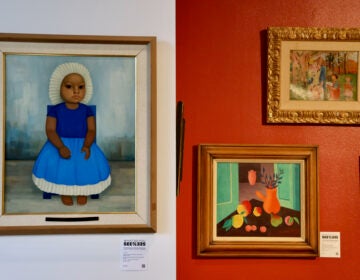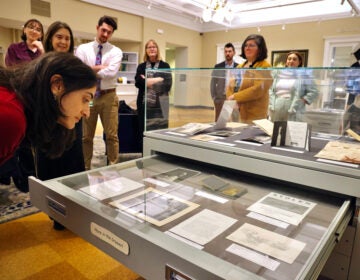‘And your little dog, too!’: Moore College’s dark vision of Oz, America
Artist Jonathan Santoro uses the Wizard of Oz as a jumping-off point to explore the sinister side of suburbia in the street windows of the Galleries at Moore.
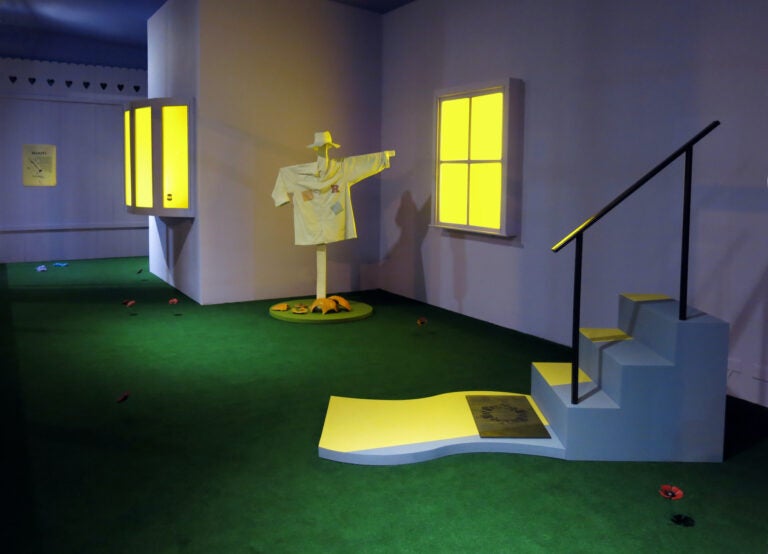
Always Chasing Rainbows at Moore College reimagines the Wizard of Oz, through sculptural forms, as a suburban landscape. The scarecrow is pictured here. The golden glow from the windows references the yellow brick road. (Photos by the artist, Jonathan Santoro.)
Jonathan Santoro may be an American oddity: he never saw “The Wizard of Oz” as a child. Nor did he see the classic movie while minoring in film studies as an undergraduate.
Of course, he had been familiar with the story and he knew the songs, but he was well in his 30s before he watched the film from start to finish. His first impressions of the Technicolor fantasy were rooted in adult concerns.
“It can be reduced down to an argument between neighbors over an untrained dog,” said Santoro. “Maybe Dorothy never leaves her home and it’s all a dream space, an anxiety dream of your neighbor where your neighbor becomes a witch.”
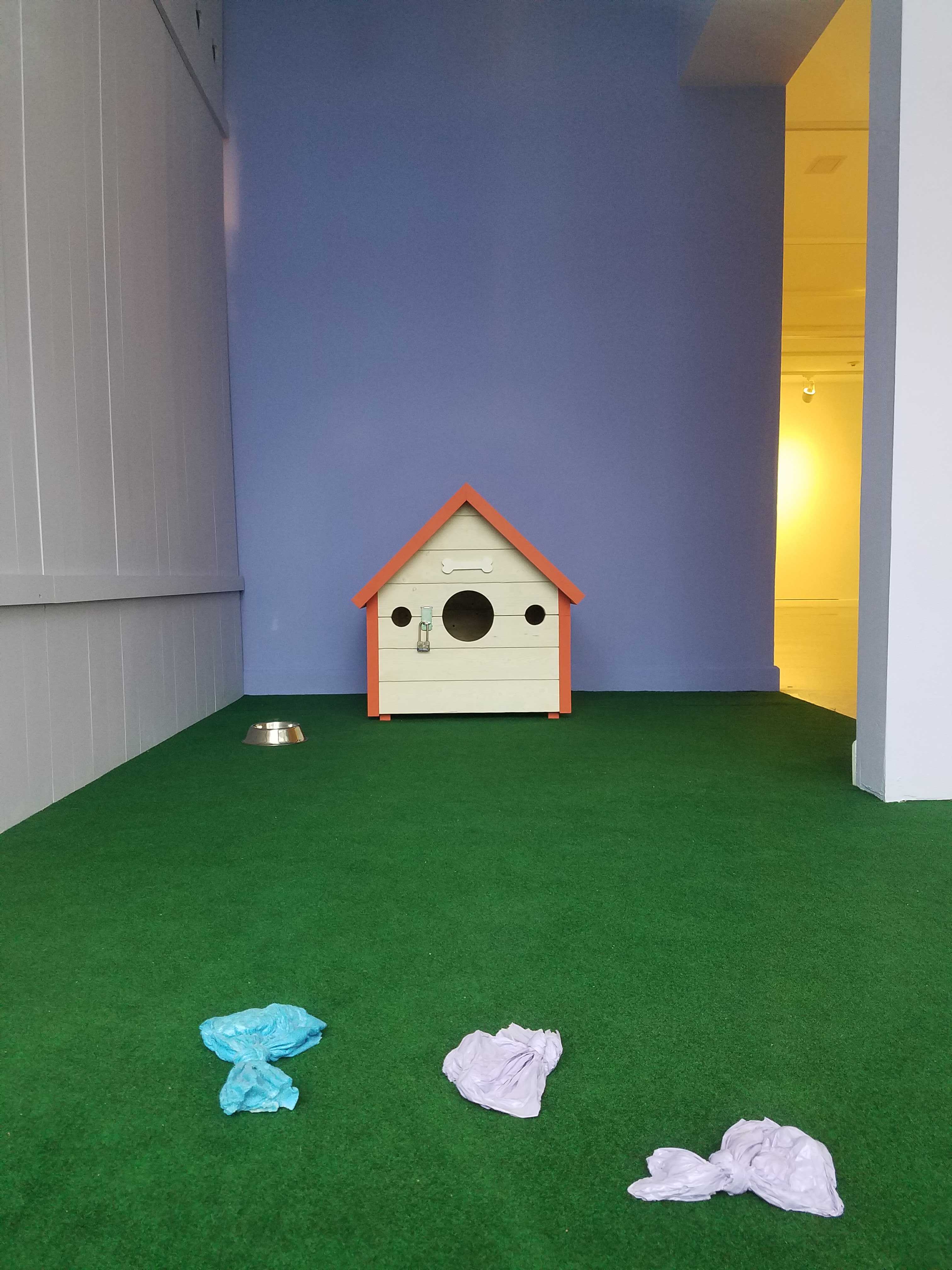
Santoro’s art installation, Always Chasing Rainbows, is a large-scale diorama in the front windows of the Moore College of Art and Design, on Philadelphia’s Parkway. It’s a sculptural abstraction of The Wizard of Oz, with the characters of the Scarecrow, Tin Man, Lion, and Toto the dog rendered as plastic lawn ornaments.
The suburban tableau, set on an Astroturf lawn surrounded by white vinyl privacy fencing and periwinkle home siding, suggests that underneath the cheerful polyurethane sheen lies something cruel.
The Tin Man is a gibbet iron, a device once used to hang and display human corpses, usually those of people who had been accused of crimes and put to death. Santoro modeled his gibbet on one that was once at Philadelphia’s Moyamensing Prison, which he had seen in the now-closed Philadelphia History Museum.
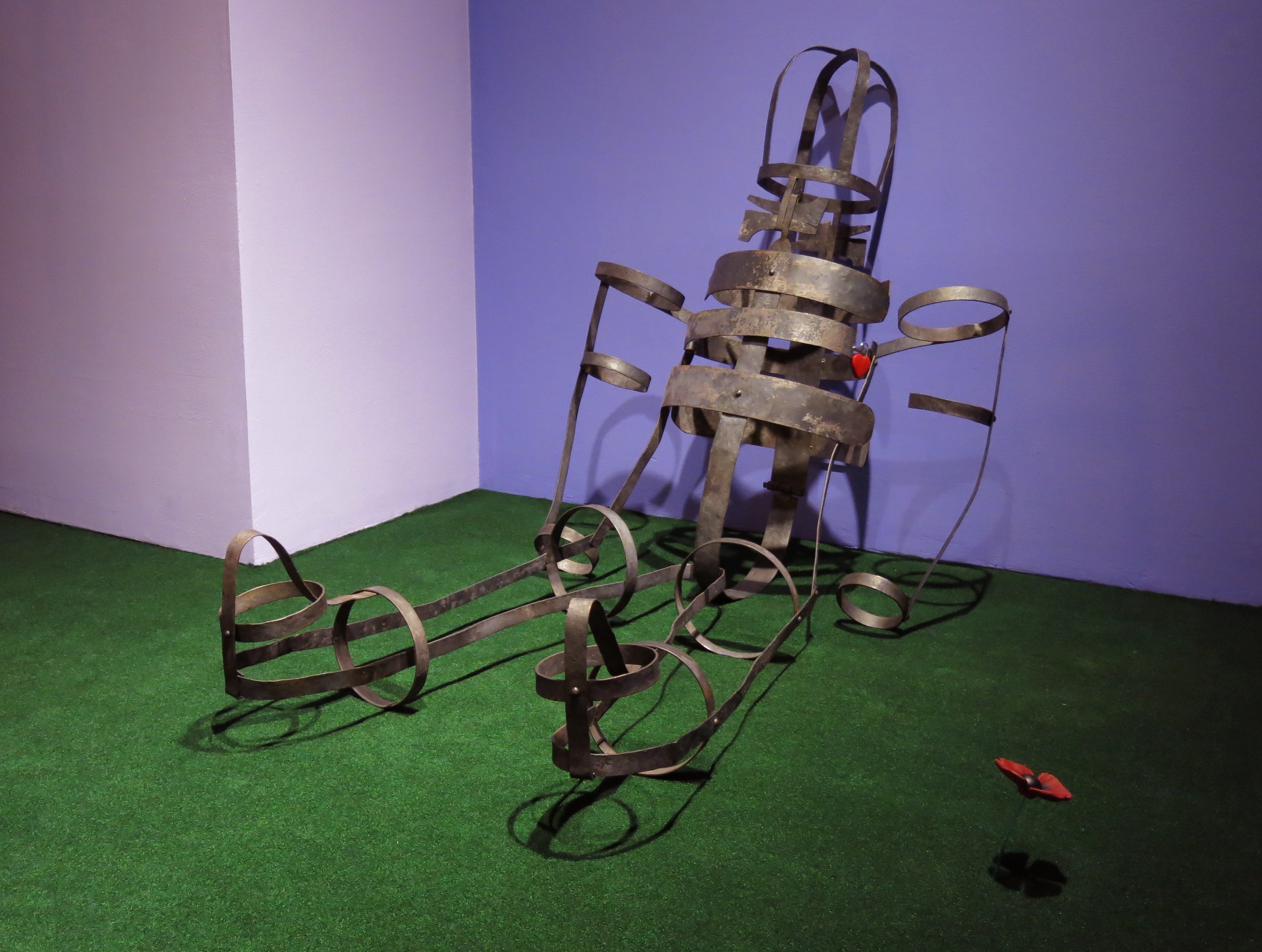
Toto’s doghouse is outfitted with a padlock and designed to look like a pillory, a continuation of the penal theme. It sits under a sign warning neighbors to not let their dogs soil the flowerbeds. Next to a cartoon of a smiling dog sweeping his own waste, the sign reads, “We know exactly who you sodden-witted sanguine cowards are, we have recorded you on hidden cameras, you embossed carbuncles are certainly not geniuses but a foul and pestilent congregation of vapors.”
The rage-filled note concludes: “Be courteous. Thanks!”
The lion is the type of sculptural figure often seen guarding doors and gateways. This lion, however, is encased in a white kitchen trash bag with a red drawstring (a nod to the red bow worn by Bert Lahr in the film). Viewers can deduce the presence of the lion based on the shape of the bag clinging to the sculpture inside.
Santoro grew up in a suburb of Providence, Rhode Island, where he developed his cynical perspective on urban sprawl. In the suburbs, social niceties break down to “expose oppressive conservative economic, social and patriarchal systems relating to protectionism and property values,” wrote Santoro about Chasing Rainbows while completing his studies at Rutgers.
He also grew up not far from a factory that fabricates plastic toys for Hasbro, where he first developed his predilection for plastic cast molds.
“They are lightweight, they are durable, easier to clean than, say, direct carving or plaster casts,” he said. “I like the utility of it.”
Santoro created Always Chasing Rainbows as his MFA thesis project at Mason Gross, the art school at Rutgers University in New Brunswick, NJ, where it was shown in a gallery space. A few months ago the Galleries at Moore, where Santoro sometimes works as an art handler, asked him to install the work in their window space.
Like all museums in Philadelphia, the Galleries at Moore are closed due to COVID-19, but unlike most galleries Moore has an exhibition space built behind its very large windows looking out on the Parkway. Even during a pandemic, it can show work publicly.
But Always Chasing Rainbows is also looking at you. Part of the anxiety it evokes is the many reminders that you are being surveilled. Santoro created a bow window, based on his parents’ home in Rhode Island, whose rounded shape suggests a panopticon, a 180-degree or 360-degree viewing station sometimes built into prison architecture.
Glowing yellow — suggesting the brick road to Oz — the window displays in its corner a small sticker for SimpliSafe, a home security system. This fictional house is not just watching you, the window says, but it is prepared to defend itself.
“I’m thinking about The Wizard of Oz as a meditation on home,“ said Santoro. In his vision, that home is threatened by neighbors. Appearing on the Parkway as the 2020 election, now three weeks past, is still being bitterly fought, Always Chasing Rainbows comments on a deeply divided populace.
“Always Chasing Rainbows is processing the time that it’s made,” he said. “The strife between neighborhoods, real or imagined, presenting a study of contemporary time through a diorama format.”
The exhibition is best seen at night, when the glare of daylight on the windows does not reflect the street. The objects are spotlit individually, appearing to float in the darkened night. The lighting adds a creepy layer not seen during the day. The show will be up until January 9, 2021.

Get daily updates from WHYY News!
WHYY is your source for fact-based, in-depth journalism and information. As a nonprofit organization, we rely on financial support from readers like you. Please give today.




